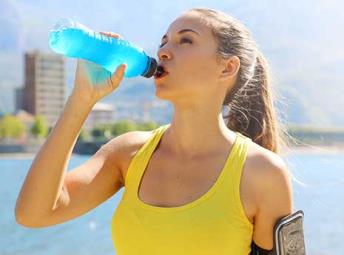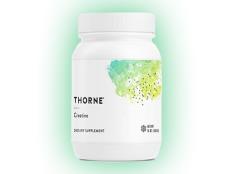A Combination of Carbohydrate and Fat
When we run 60 to 180 minutes (or more), we use a combination of carbohydrates (stored glycogen and possibly ingested calories) and fat to fuel the long run. We once believed that the absolute maximum fat oxidation rate possible during exercise was around one gram (nine calories) per minute, with most trained athletes falling around 0.45 to 0.75 grams (4 to 7 calories) per minute.
For argument's sake, let's say you are in the average group. That means on the long run we've been discussing, you can burn 240 to 420 calories per hour of fat, and the rest of your fueling comes from carbohydrates. That means 558 to 378 calories per hour need to come from carbohydrate sources.
This math tells us that our runner can still run for at least three and a half hours on stored carbohydrate calories because some of the energy used during the long run comes from fat.
Newer Science
There is emerging science revealing that if we change our daily diets to include more fat, our bodies will burn more fat during exercise. In recent research released in 2015, Dr. Jeff Volek found that by changing to a 70-percent fat diet, athletes could double their body's ability to burn fat during exercise and also use fat as a fuel source at higher intensities than previously thought possible in past research.
More: Is a High Fat Diet Best for Endurance Athletes?
A separate study done in 2010 by Belgium scientist Van Proeyen found that the body could be trained to utilize more fat during exercise with a more moderate, 50-percent fat diet. By modifying daily diet and exercising in a fasted state, subjects "markedly stimulated energy provision via fat oxidation." In short, they were able to train their bodies to become fat-burning machines by modifying daily nutrition to include more fat and synchronizing training with nutritional timing.
What To Carry on Long Runs
— For aerobic runs up to 90 minutes, all you need is water. If you are well hydrated before the run, all you will likely need is 24 to 32 ounces. If a runner is heat acclimatized, he or she will likely do fine on less than 24 ounces, depending on temperature and humidity levels.
— Some runners prefer to have a light mix of sports drink (less than 100 calories) and electrolytes rather than water. This will work as well.
— For 90- to 180-minute runs, you should have access to fluid in the range of 16 to 24 ounces per hour. Set an alarm to sound each 20 to 30 minutes to check in with your body. Ask yourself, "Am I thirsty, and when was the last time I drank something?"
— There is some evidence that fat-adapted-diet runners can do well fueling at around 100 to 150 calories per hour of run time. Even if you are not fat-adapted, 150 calories per hour should be plenty of fuel for a three-hour run, as you saw from the math above. Some runners will be nervous about this level of fueling, so it's OK to carry a bit more then use it as you deem necessary.
— There are several different sports drink companies with different product formulas. Know that individual athletes have had success with different products. One big factor is taste. You may have to experiment to find a sports drink that suits your palate. I advise athletes to go light on the calories in the fluid form and use food items to make up the calorie count. This strategy is much easier to control and change versus having all calories in a fluid form — you don't have a choice to split hydration from nutrition.
— Carry a calorie source that is easily divided into small portions. The various brands of chews and blocks are good for this purpose. You can also cut sports bars into small pieces or make your own food, like a small sandwich made with nut butter.
What to Leave at Home
Most runners do not do well with high-fiber foods during a long run. These include foods made with bran, vegetables such as peas and broccoli, beans, peas, raspberries, blackberries and pears, to name a few.
If the intensity of the run is aerobic and conversational, many runners do well including foods with some fat and protein. However, many find that as running speed or intensity increases, the ability to tolerate foods with higher levels of fat and protein diminishes. Reducing fat and protein in food is often necessary as heat and humidity levels increase, as well.
Give it a Try
If you have struggled with finding the right strategy for fueling during your long run, begin with the recommendations made here. Start on the low side of the recommended numbers and carry options to bump the numbers up as you need them.
- 2
- of
- 2
About the Author

Gale Bernhardt was the USA Triathlon team coach at the 2003 Pan American Games and 2004 Athens Olympics. She's worked as one of the few World Cup coaches and delivered coached education training for the Triathlon Union's Sport Development Team. She has coached Olympic road racers, World Cup mountain bike riders and Leadville 100 racers. Thousands of athletes have had successful training and racing experiences using Gale's ready-to-use, easy-to-follow training plans.







Discuss This Article